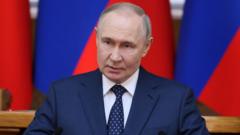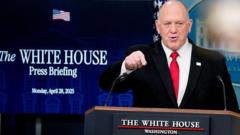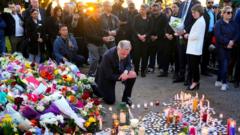As voters head to the polls, Canada finds itself at a critical juncture. Today's election is poised to determine not only the next prime minister but how Canada will navigate the choppy waters of President Trump's aggressive trade policies and their impacts on the nation’s economic future. Recent polls suggest a dramatic shift, with Prime Minister Mark Carney of the Liberal Party now holding an edge over Conservative leader Pierre Poilievre, despite the initial overwhelming support for his party just months prior. Alongside these two, the New Democratic Party, the Greens, and Bloc Québécois also vie for influence, but their roles appear diminished in this high-stakes contest.
**Canada's Political Landscape Shifts as Election Day Approaches Amidst Turmoil**

**Canada's Political Landscape Shifts as Election Day Approaches Amidst Turmoil**
Canadians cast their votes today in an election that could redefine the country's leadership in tumultuous times.
Just three months ago, Poilievre's rise seemed unstoppable, bolstered by the recent unpopularity of Justin Trudeau’s administration. However, the sudden resignation of Trudeau and the realization of vulnerabilities in Canada’s relationship with the U.S. have reignited support for Carney. A former central banker, Carney campaigns on his ability to shield the Canadian economy against Trump's tariffs while promoting a centrist agenda that appears appealing to many voters anxious about the country's future.
Poll closing times are staggered across the country, the first shutting down at 7 p.m. Eastern Time in Newfoundland, with final votes in British Columbia wrapping up at 10 p.m. Eastern. After the polls close, the nation will eagerly await results calculated the old-fashioned way—by hand—providing insights into the future leadership direction of Canada.
The way Canadian citizens prioritize issues, including the economy, immigration, and their relationship with the U.S. will shape the outcome as ballots are cast, and the air remains thick with anticipation as results roll in tonight.
Poll closing times are staggered across the country, the first shutting down at 7 p.m. Eastern Time in Newfoundland, with final votes in British Columbia wrapping up at 10 p.m. Eastern. After the polls close, the nation will eagerly await results calculated the old-fashioned way—by hand—providing insights into the future leadership direction of Canada.
The way Canadian citizens prioritize issues, including the economy, immigration, and their relationship with the U.S. will shape the outcome as ballots are cast, and the air remains thick with anticipation as results roll in tonight.





















